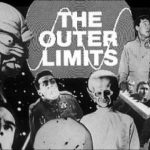In 1997, a young amateur astronomer spotted something peculiar in the heavens. After conducting independent research, Dr. Marcus Wolf made a grizzly discovery based on his findings. An interstellar object threatens to collide with earth. All of life will be obliterated if it does. And that something peculiar is an Asteroid.
The 7-mile wide comet will cause a mass extinction event. If NASA and other international space agencies can’t devise some kind of solution to circumvent this apocalyptic scenario. There is only room in massive underground bunkers to save 1,000,000 people. As such, a lottery will be devised to select the lucky few that will be saved from the extinction-level event.
Don’t be too alarmed though, because this is just the premise to 1998’s Deep Impact. A film that was absolutely panned by critics but did shockingly well at the box office.
That same year, Armageddon – a film with a similar plotline that you’d think there would be lawsuits because of it. It was released to similarly tepid critical reception. Again, audiences came out in droves to see Bruce Willis save the world as we know it from certain doom.
Highest-Grossing Features
Both films were some of the highest-grossing features of the year. They were released with Deep impact coming in at number 6 and Armageddon taking the number 1 position in terms of ticket sales.
There’s just something so alluring about comet or asteroid colliding with earth and wiping us out of existence. Maybe it’s our collective memory of what happened to the dinosaurs or perhaps it’s tied to our general obsession with all things apocalyptic, but it seems like humanity can’t shake the idea of the world being destroyed via some kind of impact.
If you’re a fan of this type of thing, then hopefully you had your telescopes out on September 24th, when an asteroid made the closest flyby in years. Although it wasn’t quite as doom-and-gloom as this video’s title implies, the object known as 2020 SW made an extremely close pass by our little blue planet. Apparently it didn’t get the memo about the whole social distancing thing. Were going to tell you a little bit more about that in a second, but first, we are going to talk about the top 10 asteroid impacts that we know about – and hopefully, we won’t be adding any new ones to this list anytime soon.
Vredefort Crater
This one touched down an estimated 2 billion years ago in Free State, South Africa.
The crater that it left behind is absolutely massive. It has a radius of 118 miles and is the largest known impact structure on the planet. UNESCO declared it a World Heritage site back in 2005.
Sudbury Bassin
This one is slightly more recent. Scientists estimate that it landed 1.8 billion years ago in Ontario, Canada.
It’s also considered one of the largest impact structures on Earth and has a diameter of 81 miles.
Acraman Crater
580 million years ago, in South Australia, this asteroid made a crater with a diameter of 56 miles. Today the crater is a giant lake known as Lake Acraman.
Woodleigh Crater
It seems like these cataclysmic events on our list keep getting closer and closer to our present day. This one collided with our world 364 million years ago in Western Australia.
You can’t actually see this crater from the surface. As such, there has been a lot of debate about its actual size, but most estimates report it’s diameter as being somewhere between 25 and 75 miles long.
Maniconagan Crater
Yet another lake that got its start as an impact event is Lake Maniconagan in Quebec, Canada. The galactic event that caused this geological formation happened roughly 215 million years ago. Its crater is one of the best-preserved of its kind on the planet. It stretches a mind-boggling 62 miles across.
Oh, by the way, if you’re enjoying this video so far you should really stick around to find out all about that most recent Asteroid that got close to hitting our planetary home. Stick around to find out what would have happened if it did.
Don’t forget to like this video and subscribe to our channel so you can keep up with all of our latest facts-tastic videos. Tap the bell icon to turn on notifications.
Morokweng Crater
In North West, South Africa 145 million years ago a giant meteorite slammed into the Kalahari Dessert. The fossilized remains of the meteorite can still be found there today.
Kara Crater
If you were alive in Nenetsia, Russia 70.3 million years ago you would have seen quite the firework display when this giant meteor hit the earth. Today, however, not much can be seen of its impact as it’s crater has mostly eroded. Some have made the claim that the site is actually the result of 2 different impacts, the first being Kara and the second which is called Ust-Kara.
Chiexulub Crater
This one is famous for a number of different reasons. For one thing, it’s one of the largest impact craters that we have ever discovered. It’s estimated diameter is between 106 to 186 miles long.
Located on the Yucatan Peninsula in Mexico, this crater is believed to be the result of the asteroid that caused the mass extinction of the dinosaurs. It’s also one of the most beautiful impact craters on the planet. Satellite images of the structure are absolutely breathtaking.
Popigai Crater
You can find this crater out in the brutal frozen Siberian tundra. If you intend to make a voyage to this location, bring your excavation gear because Russian scientists believe that the crater is lined with trillions of carats of diamonds.
It’s said that this is one of the largest diamond deposits in the world. These precious gemstones are known as impact diamonds. The asteroid that made it’s impact here fell some 35.7 million years ago.
Chesapeake Bay Crater
We didn’t even know that this crater existed until the 1980s. It’s only about 125 miles away from Washington DC and is approximately 53 miles in diameter.
The impact event happened roughly 35 million years ago.
So what about the recent asteroid 2020 SW?
It made its pass on September 24, 2020.
When it whizzed on by, it was closer to our planet than the moon gets in its orbit.
The interesting thing is that we didn’t even know this asteroid existed until a week prior when it was discovered at Mt. Lemmon Survey in Tucson, Arizona.
It was only 16,700 miles away when it made its pass.
To put this in some kind of perspective, the moon is about 238,900 miles away from us on average. This is equivalent to 30 Earths away. The asteroid passed at a distance that’s only 2 earths away. That’s awfully close!
Some satellites used for weather and TV are actually further away than the asteroid came to hitting us.
Colliding With Our Planet
Initially, we weren’t sure if it would collide with our planet or not but upon further investigation scientists were able to ascertain it’s orbital trajectory with a high degree of precision.
Based upon its brightness when it passed over the Pacific Ocean, astronomers were able to determine that it was approximately 15 – 30 feet in diameter – or about the same size as a small RV.
Even if it were to have a trajectory that crossed paths with earth, an object of its size coming into our atmosphere would have almost surely broken up before reaching the ground. The result would a brilliant fiery streak across the sky call a fireball.
Dr. Paul Chodes from the Center For Near-Earth Object Studies reassures us that quote-end-quote ‘there are a large number of tiny asteroids like this one, and several of them approach our planet as close as this several times every year’.
After making its close approach, 2020 SW will continue to make its journey around the sun. It won’t make another return to our Earth-Moon system until 2041, so if you missed it, you might be waiting for a while. When it does finally come back, it will make a flyby much further away than this time,
Another Asteroid Is On Its Way
Researchers discovered an asteroid back in 2018 at the Zwicky Transient Facility in California that will be swinging by Earth on November 2, 2020. That’s right, just in time for the US elections – well the day before to be precise.
If you thought this year couldn’t get any worse with the pandemic, civil unrest, and polarization of society through a divisive election cycle, can you imagine what things would be like if you threw in an apocalyptic asteroid collision just for kicks?
Before you get your panties all up in a bunch, it should be noted that 2018 VPI as the asteroid is called is only about the size of a small car and has only a .41 percent chance of entering Earth’s atmosphere.
Even if it were to defy the odds and make an impact, the majority of it would break up in the earth’s atmosphere. Some people might hear a boom, and pebble-sized meteorites might fall onto rooftops, but that’s it.
Not Like A Deep Impact Or Amageddon
If you are expecting any kind of Deep Impact or Armageddon-like asteroid touchdown in your life then you’re most likely going to be disappointed – or relieved depending on your perspective – to find out that NASA doesn’t expect any sizable asteroid or comet to hit our planet in the foreseeable future. They take that kind of thing seriously – as you’d expect. Even so, they estimate the likelihood of an asteroid stoking the earth that is capable of taking out a city at a .1% chance per year. So, it’s not technically impossible.
So even though we’ve been lucky so far and no asteroid is currently en route to our earthly home, there is still always the chance that something might be headed our way that our telescopes and instruments are incapable of detecting until it’s too late.
Are you afraid of an asteroid hitting Earth in your life or do you think that’s just the kind of thing you see in the movies? Let us know what you think in the comments section.
And before you move on to something else, do us a quick favor and give this video a like and subscribe to our channel. Tap the bell icon to turn on notifications so you can keep up with all of our latest videos.


